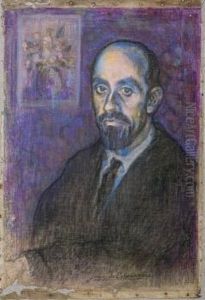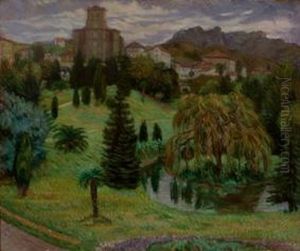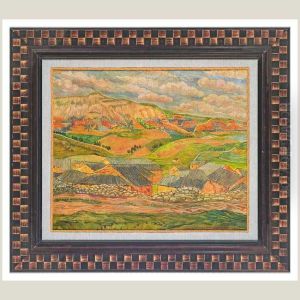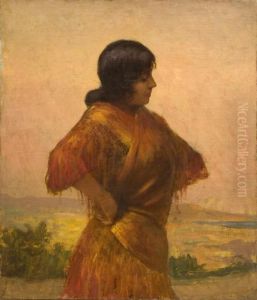Juan De Echevarria Y Zuricalday Paintings
Juan de Echevarría y Zuricalday was a Spanish painter born on July 20, 1875, in Bilbao, Basque Country, Spain. He was a significant figure in the Spanish art scene during the late 19th and early 20th centuries, particularly known for his contributions to Basque painting. Echevarría's work is often associated with the modernist movement, and he is recognized for his individual style that combined elements of Impressionism and Symbolism.
Echevarría began his art studies at a young age in Bilbao before moving to Madrid, where he furthered his education at the Real Academia de Bellas Artes de San Fernando. His desire to expand his artistic knowledge and skills led him to Paris, which was the epicenter of the art world at the time. In Paris, Echevarría was exposed to the latest artistic movements and trends, and he immersed himself in the vibrant cultural life of the city. This experience profoundly influenced his style, technique, and choice of subjects.
Throughout his career, Echevarría displayed a keen interest in capturing the essence of his homeland, the Basque Country. His works often depicted landscapes, traditions, and people of the region, imbued with a sense of nostalgia and a deep emotional connection to his roots. Echevarría's paintings were characterized by a rich palette, dynamic brushwork, and a strong emphasis on light and atmosphere, which he used to convey mood and sentiment.
Despite his attachment to Basque subjects, Echevarría also painted a variety of other themes, including portraits, nudes, and social scenes. His versatility and ability to evoke emotion through his art earned him considerable acclaim during his lifetime. He participated in numerous exhibitions both in Spain and abroad, and his works were collected by art enthusiasts and institutions, contributing to his reputation as one of the leading Spanish painters of his era.
Juan de Echevarría y Zuricalday's life was cut short when he passed away on March 3, 1931, in Madrid. His legacy continues to be celebrated, and his works are held in high regard, with many of them displayed in museums and galleries across Spain, including the Museo de Bellas Artes de Bilbao and the Museo Nacional Centro de Arte Reina Sofía in Madrid. Echevarría's unique blend of regionalism and modernist aesthetics remains a significant part of Spanish art history, and he is remembered as an artist who captured the spirit and character of his time and place with passion and authenticity.



